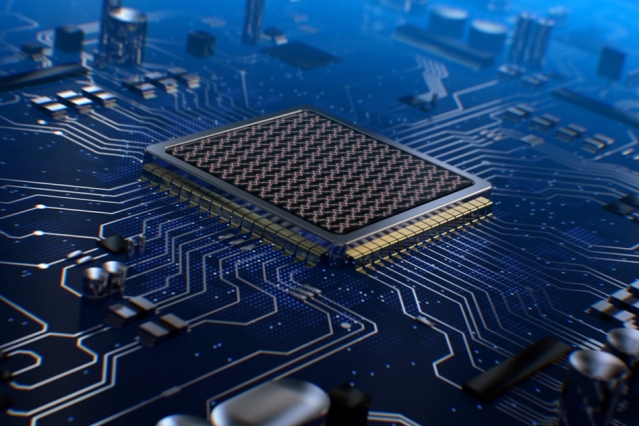US, all public funding for semiconductor development

The US Senate approved by a large majority a measure to finance the development and construction of semiconductors to counter China with 50 billion
The US Senate passed the US Innovation and Competition Act (Usica), a bill to address China's technological threat.
With 68 yes and 32 no, the US senators gave the first green light to investments of 250 billion dollars in artificial intelligence, quantum science and the production of chips and semiconductors.
Republicans and Democrats therefore overcame the differences and joined forces to approve one of the most important interventions of the American government in industrial policy. The ambitious plan in the field of science and technology is presented as a "historical" text to counter China's economic threat and its "authoritarian" model.
Not only that, the lack of expansion of domestic semiconductor production or the redirection of supply chains of rare earths, say the supporters of the measure, could leave the US at a strategic disadvantage in the years to come.
The bill gained support after years of the US opposing government subsidies for private industry, whether it be Airbus in France or Huawei in China, the New York Times points out .
The US Innovation and Competition Act must now pass to the House of Representatives to be sent to the White House for signature by President Joe Biden.
All the details.
THE APPROPRIATIONS PROVIDED
The bipartisan US Senate measure allocates approximately $ 190 billion for provisions aimed at strengthening technology and research and development in key areas such as artificial intelligence and quantum science.
In its current form, the bill also includes a 30% increase in funding for the National Science Foundation. Allocated $ 29 billion for a new scientific direction that focuses on applied sciences.
52 BILLION DOLLARS TO THE SEMICONDUCTOR INDUSTRY
But subsidizing the US chip industry is also at the heart of the US Innovation and Competition Act.
In fact, the text provides for the approval of an expenditure of 52 billion dollars over five years to encourage the manufacture of chips and semiconductors in the United States. The latter currently mainly produced in Asia.
The funding is intended both to boost domestic manufacturers and to attract the best foreign semiconductor manufacturers to open new advanced manufacturing in the US.
Senator John Cornyn, a former Republican critical of government funding for industry, said of semiconductor funding: "Frankly, I think China has left us no choice but to make these investments."
THE PRESSURES OF BIG TECH AND AUTOMOTIVE GROUPS
In recent months, automotive groups have been urging the Biden administration to secure the supply of chips for car factories. The automotive industry has been particularly affected by the shortage of semiconductors.
At the moment, analysts believe the global chip shortage will persist until 2022. But the tech industry will also be affected by the chip crisis.
And the Semiconductors in America Coalition warned that government action shouldn't favor a single sector. So much so that last month even big techs like Apple, Microsoft, Alphabet, Amazon joined the coalition with chip makers like Qualcomm and Intel to put pressure on the US government.
The coalition has therefore asked Congress to approve the allocation of 50 billion dollars for research and production of semiconductors.
BIDEN COURSE AT THE SHELTERS FOR THE LACK OF CHIPS
To address growing concerns about the global semiconductor shortage, Biden signed an executive order earlier this year.
The order called for a 100-day government review of supply chains to address shortcomings in the chip acquisition.
THE SURVEY ON SUPPLY CHAINS
"Yesterday, the US administration published the results of a survey on global supply chains," reported Il Sole 24 Ore . “The aim was to assess the risks of the country's dependence on the import of strategic goods, semiconductors, batteries, rare earths, drugs and active ingredients. The report recommends increasing manufacturing production and reducing dependence on strategic competitors, such as China. With a reverse from the free market ideology: "For too long, the US – we read – has accepted certain aspects of globalization as inevitable, in particular the fear that businesses and capital run wherever there are wages, taxes and lower regulations ”. According to the document, it is time to introduce "taxes, labor protections, environmental standards, which help make globalization work for Americans as workers and families and not simply as consumers".
“The new task force on supply chains will be led by the ministers of trade, agriculture and transport. It will have to identify areas where supply and demand are not aligned, in sectors such as building and construction, semiconductors, transportation, agriculture and food. With an eye to the vulnerabilities that have emerged in recent months and the long-term goal of preventing them from happening again ”.
THE BEIJING REACTION
A few hours after the US Senate vote, the Chinese parliament expressed strong indignation and resolute opposition to the bill, Chinese news agency Xinhua reported, as reported by Agi .
What is most striking about the American legislation – points out the New York Times – is the degree to which the projects financed by the bill are strictly parallel to those of the Chinese “Made in China 2025” program. The Chinese program channels huge government spending on technologies where the country is trying to be independent of external suppliers. The Beijing government announced its initiative six years ago.
A sign that the US does not intend to lose ground towards the Dragon.
This is a machine translation from Italian language of a post published on Start Magazine at the URL https://www.startmag.it/innovazione/usa-tutti-i-finanziamenti-pubblici-per-lo-sviluppo-di-semiconduttori/ on Wed, 09 Jun 2021 13:59:32 +0000.
